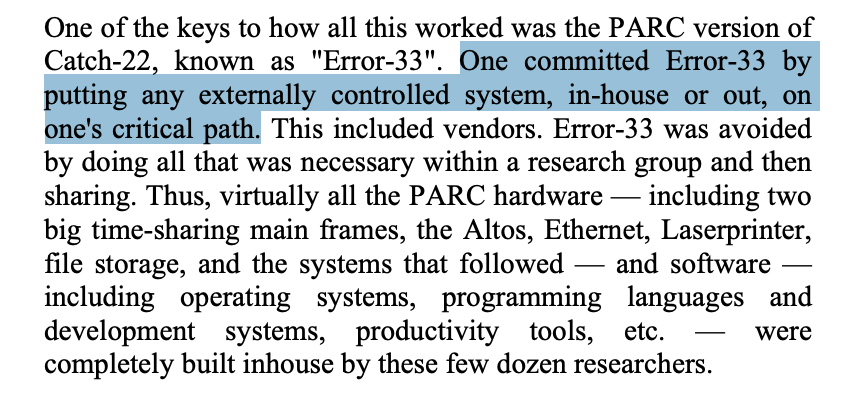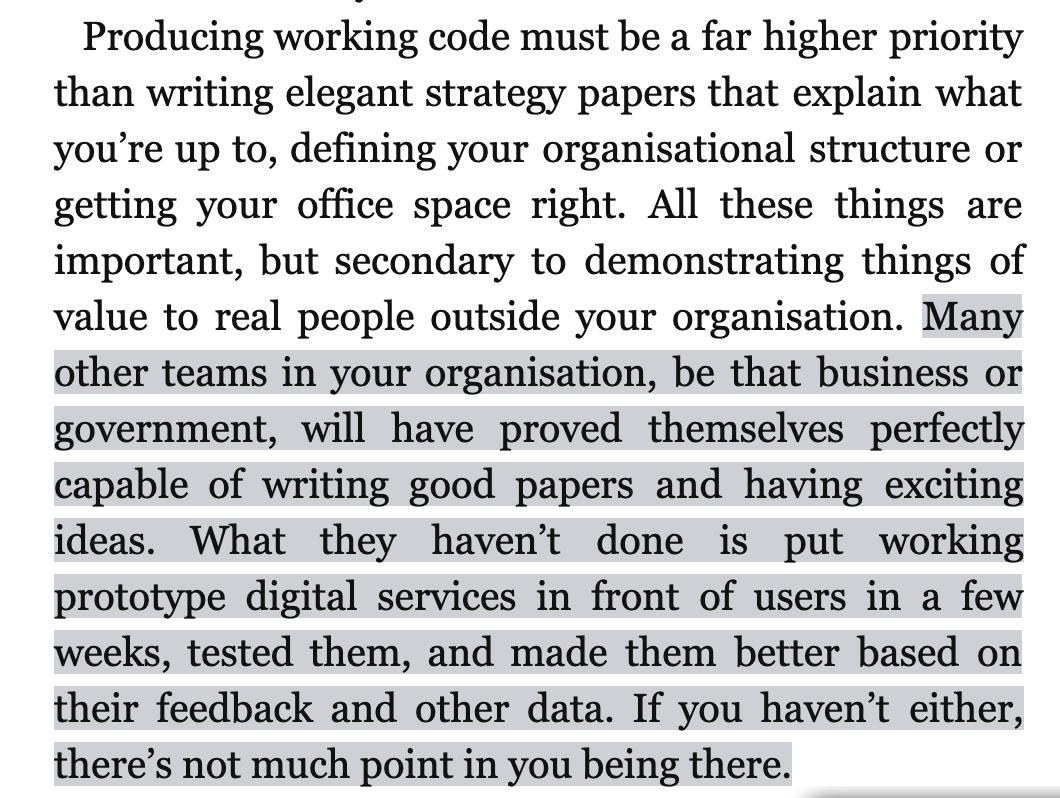The thrust: people working in complex problem spaces like government sometimes err tactically in making a dependency that others do some change before getting to work, producing value.
I believe very strongly in starting by creating value in *some* way, shape, or form before ever even asking someone for their time and attention.
To most of the people working on complex problems, hearing someone's idea is a poor use of their time.
And yet I still see people do it. Worse, they hear that "it's coming" and wait, wait, wait.
They called it "Error 33" or what I'll call the external dependency error.
(Source: vpri.org/pdf/m2004001_p… )


New people with ideas have been coming forever. You are not different.
So: start where you are.
*How* do you do that? Here are a few thoughts.
- PDF forms
- Fax machines
- Paper
- Telephone trees
- **Going in person on behalf of people**
Existing interfaces require no change. They are stable APIs at small scale.
takes forever, requires tons of human change/training, never works well
Journey mapping with a cross-disciplinary group can be useful, but it is nonetheless an aggregation of individual myths.
The latter can come from user research, but it's even higher fidelity when it's *real* transactions.
Yes, you can cover a lot from devising test cases, but monitoring gives you a wider view of what's happening.)
If you've built something that is an order of magnitude better (on, say, UX) with "you don't need to change anything to use this" — that's leverage.
- "Ship ASAP!"
This is a false binary to me.
Building *something* good, fast, with clear value and requiring no deep change demarcates you as a different actor.
Most value-add changes (say policy) cannot be done in isolation.
As a technologist coming into a domain that's calcified over decades, why do you presume the change you make will be positive?
Starting small, changing little—but shipping—can tell you.
Or, this fairly well-written digestion of it: samzdat.com/2017/05/22/man… )
I agree. The idea of technology as hypothesis testing exercise —and technology as *subservient* to establishing causal relationships—is powerful.
This is usually not the case in large, long-lasting orgs like govt.
Starting where you are helps.
Start by offering a "shim" layer of customer service.
AdWords + splash page.
Stand outside a lobby.
Whatever.
Get people and help them through the process you're working on.
You'll find things no one else in the world knows.
I hope it has been valuable, and would love to hear your experiences or more abstract challenges to this thinking that your experience gives you.
A "shim" (Googles...) is defined as "a washer or thin strip of material used to align parts, make them fit..."
That's actually not a bad definition for its use here. I mean it to say a simply bridge layer on top of what is now.





